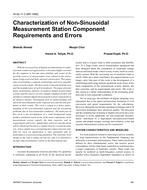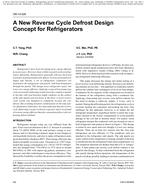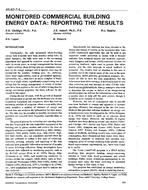While this presentation specifically deals with use of a mathematical model to verify laboratory data obtained while measuring the efficiency of refrigerator/ refrigerator-freezer systems, it does really expose a problem common to all laboratories and laboratory procedures.
When any laboratory is faced with a complex measuring task, with or without an existing standard, they evaluate the problem, determine what type of facility is required, instrument the facility and then proceed to accumulate data.
Reams and reams of data pages pour out of the computers, are recorded in logs and ultimately end up in reports which certify a performance or safety characteristic. Meter readings are “god”-like indications not subject to question. The laboratory may in fact have done everything correctly, according to the scenario they outlined, but did they really measure the thing they wanted?
We have examples of this in the automotive field. All manufacturers rate car efficiency in miles per gallon. EPA also rates car efficiency in MPG’s. Both of them can demonstrate that they follow sound engineering practices — record with integrity and use calibrated instrument systems — but both come out with different numbers. When the consumer buys and operates the vehicle and checks his own mileage, a third set of figures enters into the equation.
Strangely, all are right but two out of three are wrong, and somewhere some way there must be a means of picking Mr. Right.
The purpose of this paper is to show how we resolved it in one specific instance.
Citation: Symposium, ASHRAE Transactions, Volume 83, Part 1, Chicago, IL
Product Details
- Published:
- 1977
- Number of Pages:
- 13
- File Size:
- 1 file , 970 KB
- Product Code(s):
- D-CH-77-13-2


